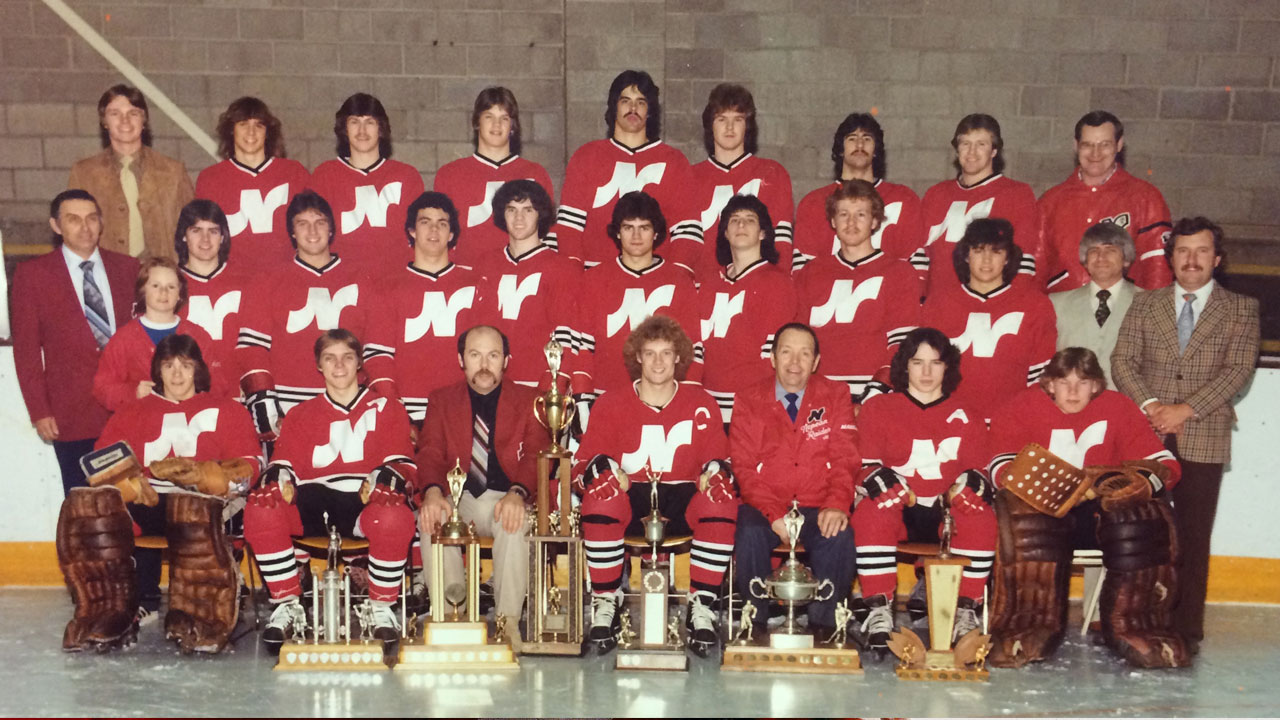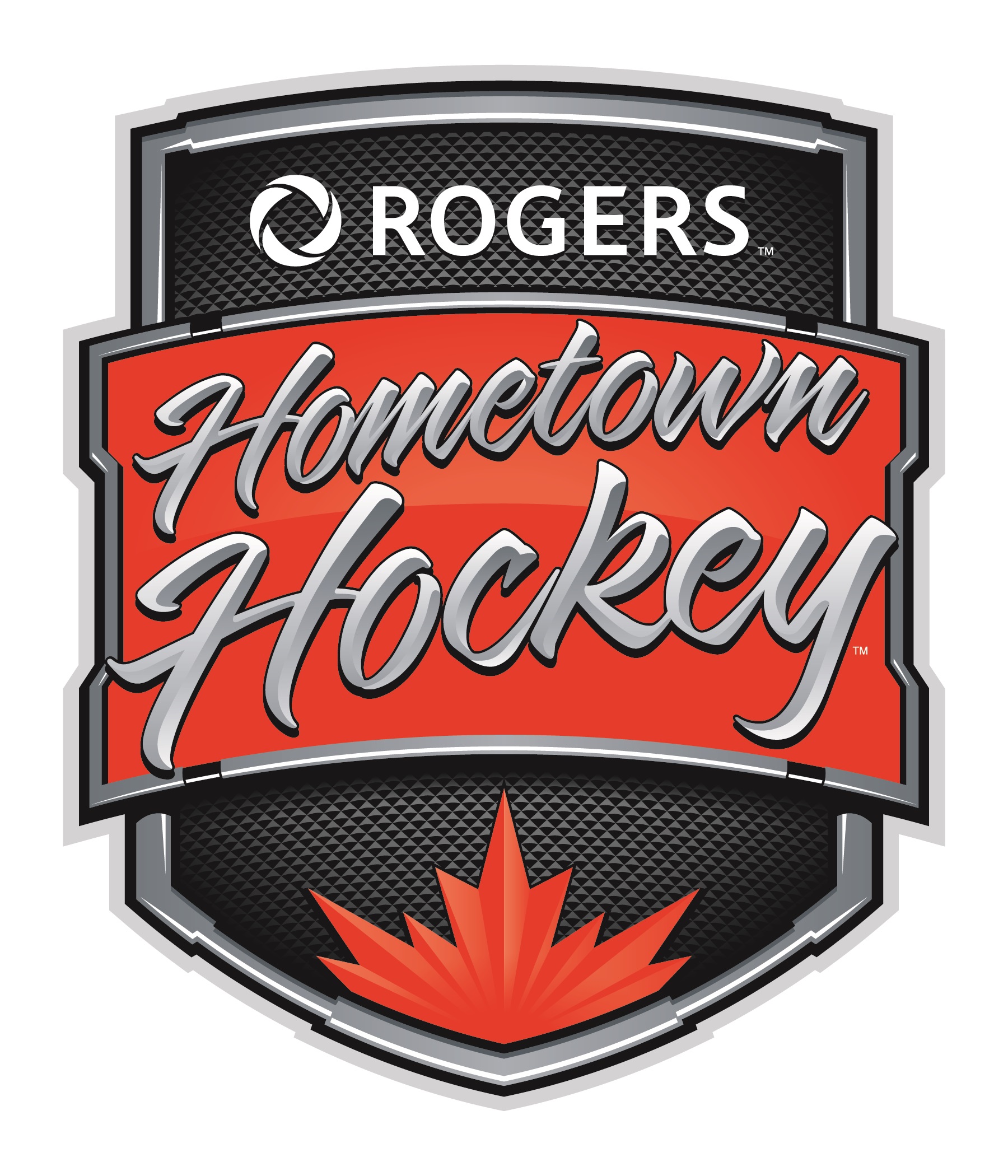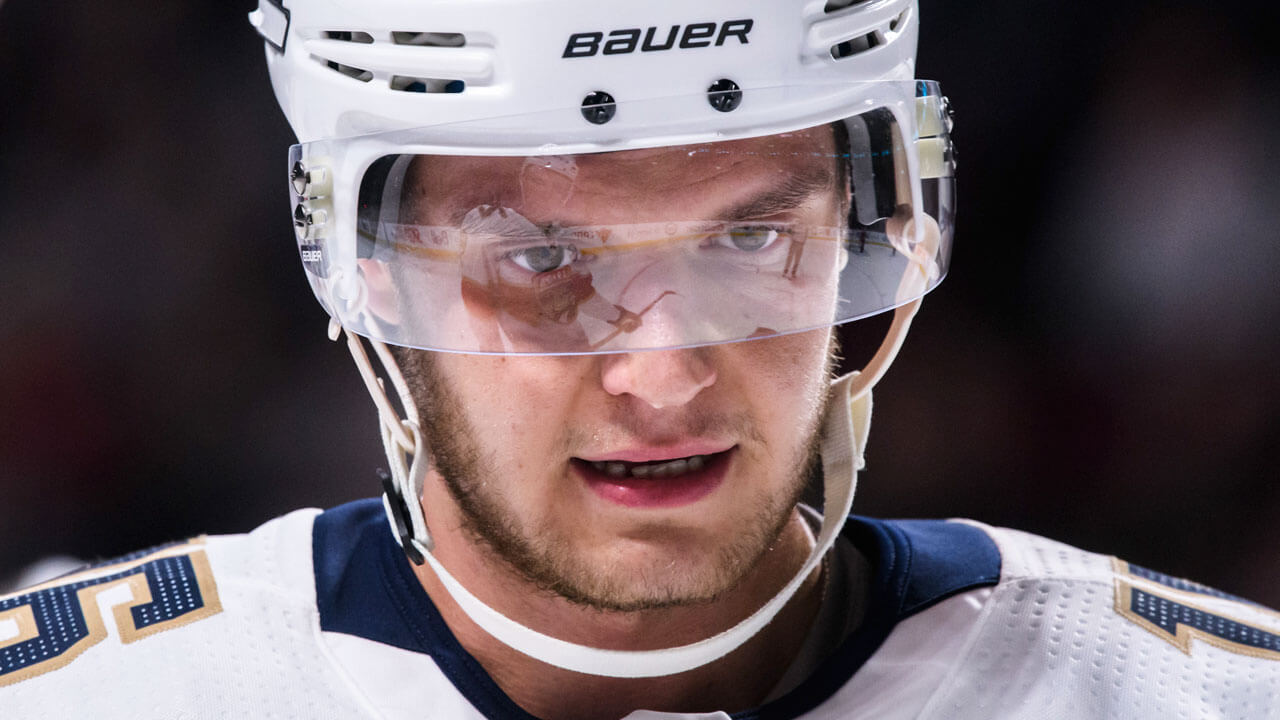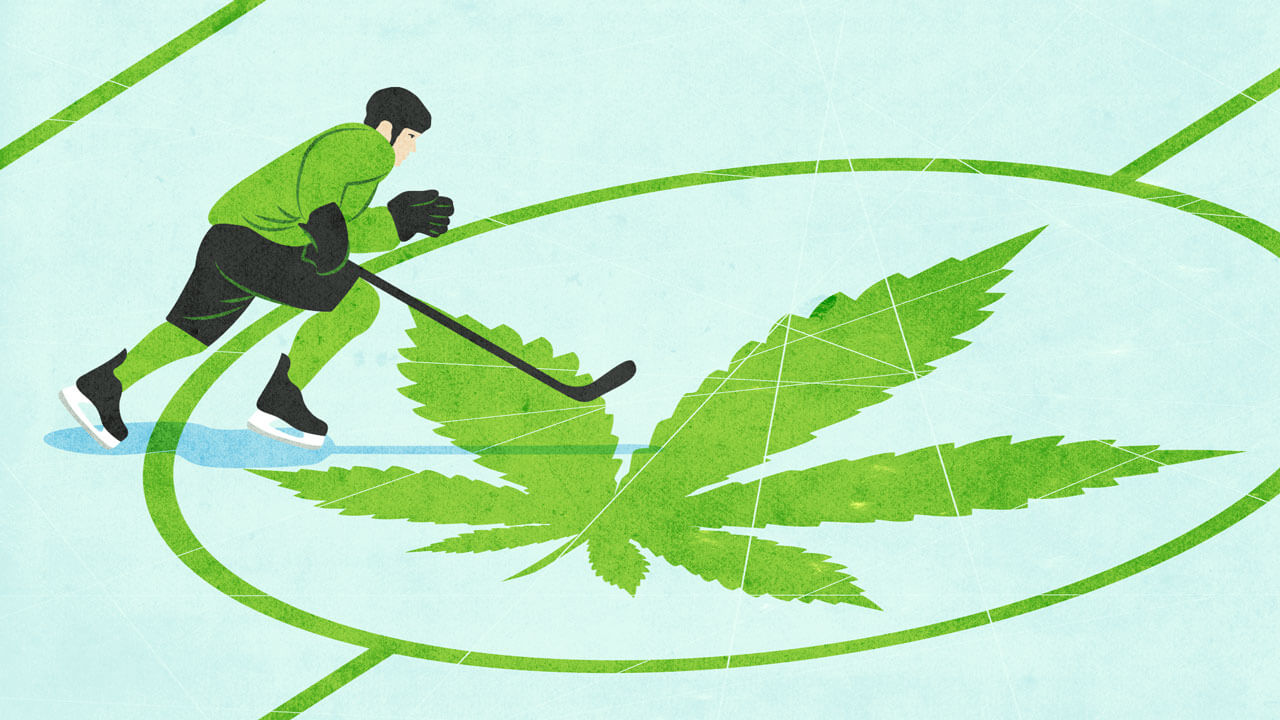Run down the list of the NHL’s all-time leading scorers and just six names sit above Steve Yzerman’s. Only seven players in league history managed to set up more goals than the Canadian pivot. A mere eight scored more than the 692 he put in the back of the net himself.
The Hall of Famer who built the Detroit Red Wings into a juggernaut on the ice and eventually did the same for the Tampa Bay Lightning from the front office has a trophy case stuffed with team and individual awards. But before all that — before he was captaining big-league squads to back-to-back Cup Final sweeps in the late ’90s — Yzerman was a quiet, doggedly determined kid in Nepean, Ont., routinely making life nightmarish for his teenage foes.
Denis Giacobbi remembers it well. A defenceman for the Gloucester Rangers at the time, Giacobbi’s squad went toe to toe with a 15-year-old Yzerman’s Nepean Raiders in the 1981 CJHL finals.
“I was probably one of the more physical defencemen in the league, so, you know, finding targets and playing that kind of role,” Giacobbi recalls. “But this little Steve Yzerman kid that came up — you couldn’t hit him. You couldn’t find him. He’d be there, he’d be along the boards or coming down the boards — you’d have him lined up for the old 1980 hip check back in the day, which Mr. Potvin made famous coming out of Ottawa, and next thing you know, he would stop on a dime.
“He was so agile, so smart with the puck. The ability to evade the check and find gaps in the opposing defence was just incredible.”
Heading into the opening tilt of the series, the Raiders rookie had put up an absurd 38 goals and 92 points in just 50 games that season, second-most in the league behind 19-year-old teammate Gord Rivington. But that early success had hardly been a cake-walk for Yzerman, as he was forced to line up against older, heavier opponents on a nightly basis.
“He was just a kid. He was just a little boy coming into a young man’s league, really,” Giacobbi says.
“I think Stevie was the youngest on our team,” adds Jean Boisvert, one of Yzerman’s Raiders teammates. “[But] he just had tremendous puck sense.”
Enough to raise a few eyebrows in the opposing locker room before the two clubs took to the ice?
“He was certainly on the chalkboard,” Giacobbi chuckles. “You know, he was rookie of the year that year, he was a top prospect, he finished second in the scoring. I mean, really unheard of for a 15-year-old going into that league at that time.”
Yzerman didn’t make it easy for Gloucester, but the Rangers managed to grind out a Game 7, championship-clinching win against Nepean, besting the future legend in the very rink that would be renamed in his honour 16 years later.
While he didn’t leave Nepean with that ’81 trophy, his brief tenure in Raiders colours was plenty enough to earn the respect of other skaters in the area. It wasn’t just Yzerman’s dizzying offensive skill that impressed his contemporaries, though. It was the way in which that skill was inflicted upon the opposition.
“There was something there that you just don’t see very often. The other thing is, you know, the courage,” Giacobbi says. “He would never hesitate to go into a corner. He wasn’t a perimeter player — he was a dog on the puck.
“There was no fear.”

Born in Cranbrook, B.C., Yzerman and his family moved east to the Nepean area — then a separate suburb of Ottawa — when he was 10 years old. It was a dream scenario for a kid partial to working up a sweat, his new environment an endless playground.
“It was a great place. We were kids, we loved it,” Yzerman recently told Sportsnet’s Emma McLagan. “We got on our bikes and we rode everywhere … down to the river and going along the Ottawa River, into Gatineau, up into the hills.”
Not a bad spot for a burgeoning hockey player either, with not just a winning Raiders program, but also a rink on seemingly every corner. “Every neighbourhood, on the baseball field, when winter came around they built an outdoor rink,” Yzerman recalled. “So, if we weren’t out there on our skates, we were out there in our boots.”
The admiration between Nepean and the rookie who became its most famous alumnus wound up being mutual, as the impact of those early years learning the game isn’t lost on the 22-year NHL veteran.
“What stands out for me was the high level of coaching I got at the time,” Yzerman said of his Nepean days. “You don’t really know [when you’re young] — we played on good teams, we had coaches, we had a lot of fun. Then I’m in the NHL and I look back, and I’m like, ‘God, these guys that I played for, they were phenomenal coaches.’”
Join Sportsnet hosts Ron MacLean and Tara Slone as they travel across the country, making stops in 24 different communities to celebrate local hockey stories, and the game’s biggest stars.
The finely webbed network of abilities that comprised Yzerman’s skill-set even back then was so complex and particularly arranged, it’s tough to pin down which played the biggest role in allowing him to be such a force.
The scrawny boy wonder with the steely focus, picturesque ’80s mullet and deadly hands could always score with the best of them — and that didn’t change when he got to the NHL, as his six straight seasons of 100 points or more could attest. But despite his lack of size he could also just as easily line up opposite his fellow high-flying scorers and shut them down, that versatility evident from day one.
“He was a mixture of a lot of different players,” Darren Pang, a fellow former Raider and longtime close friend of Yzerman’s, told Sportsnet’s Chad Walker recently. “Very slight, very small. Right-handed, kind of hunched over, great hands. One shift he could look like Denis Savard and one shift he could look like Bryan Trottier.”
Adds Bob Errey, who suited up alongside Yzerman in the OHL right after the latter left Nepean: “He could read both sides of the puck, so you could put him out there when you were up or you could put him out there when you were down, because he could score and he could protect the lead.
“That was the thing with Steve — he could kill penalties, he could be on the power play, he was a faster player than I thought he was when he first came in. He was just so competitive. He always wanted to be better than the guy beside him.”
His value to the Raiders extended beyond what occurred between the whistles. Even as the youngest member of the team — a distinction he held at multiple points on his path to the big leagues — Yzerman played the part of stoic, steadfast leader like a natural.
“I remember there was one game … I gave up just the worst goal in the world,” Pang recalls of their time with the Raiders. “It was bad. It was a bad goal. But this will tell you about Steve. He comes back — and he’s 15, and I’m 16, we’re the underage guys — he comes back to the net, hits my pads, and he says, ‘We’re going to get that one back. Now, let’s go.’ One of those kinds of things — he doesn’t say a lot but he kind of has that clenched jaw.
“[Then] he gets the faceoff win, spins around, goes down, scores a magnificent goal, comes right back and he says, ‘Let’s go.’”
The consensus among those who played with and against him is clear: There was just something different about Yzerman. Even though he seemed to have every skill in the bag — the hands, the jets, the two-way prowess — it was, more than anything else, his insatiable desire to outlast the rest that pulled him into the elite.
“He was driven to be the best,” says Dave Lowry, a former NHLer in his own right, who also played alongside Yzerman in Nepean.
His work ethic back then was the stuff of legend, says Giacobbi, such that even players on opposing teams were hearing stories of the gruelling off-ice hours the young phenom was logging.
“In peewee and in bantam, he was already starting to go to the gym,” Lowry remembers. “He knew that that’s what you had to do to play at the next level. He was very committed in that, and this was way back before summer training really became the norm. He was way ahead of it.”

Following that CJHL finals loss to Gloucester, Yzerman was tabbed with the fourth-overall pick in the 1981 OHL draft, ushering him on to the Peterborough Petes.
Fresh out of Nepean, the young pivot similarly made an immediate impact on his older OHL teammates. Bob Errey, who suited up alongside Yzerman both as a 16-year-old with that Petes team and again in Detroit more than a decade later, could tell early on that Yzerman was a cut above the rest.
“You know, all the greats can see it before it happens. That was Steve,” Errey says. “And he didn’t shy away from really anything…. It was pretty brutal back when we played…. They’d take your head off, and he was always a target.
“But, you know, just his presence on the ice and the way he played the game — cerebral players stand out, and he was certainly one of them.”
Errey’s had the luxury of playing alongside more than a few of the game’s all-time greats. The 54-year-old won the Cup with Lemieux, Jaromir Jagr and Paul Coffey in Pittsburgh. He had a brief stint with Pat LaFontaine, Dale Hawerchuk and Dave Andreychuk in Buffalo, played a year with Mike Modano and Joe Nieuwendyk in Dallas, and eventually finished his career on a Rangers squad led by Wayne Gretzky.
But of all the players Errey’s ever skated with or against, or seen ply their trade in front of him, Yzerman has always seemed a different breed, he says.
“The great ones lead by example. They don’t need to say a lot,” Errey says. “You see their competitiveness off the ice, it’s their actions more than their words.… It’s one thing to say something, but I think you have to display it. I mean, this guy was bloody, battered, on-one-knee Steve Yzerman. That’s what I remember.
“I remember when he lost half a lip against the Oshawa Generals. I remember him playing with a knee that nobody thought he would ever play on again as he finished his career. This guy’s a warrior. I mean, he’s a warrior. And I don’t know if you say that about all stars, about all Hall of Famers, about all players who are maybe [in] the top 10 all time. I don’t know if you say ‘warrior.’
“There’s not many guys who you can say, in that category, are like that. And he is. He really is.”




